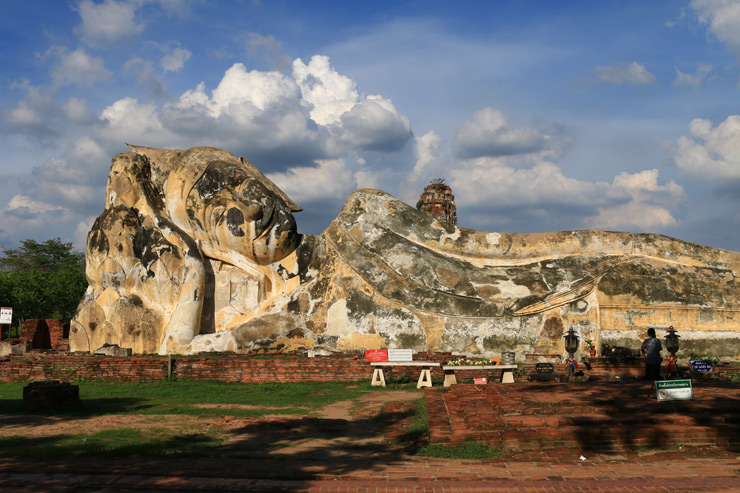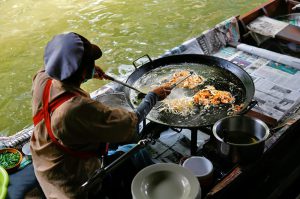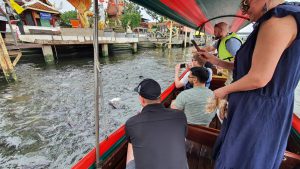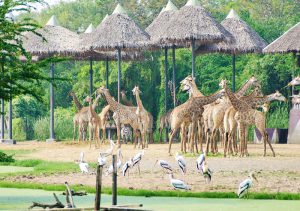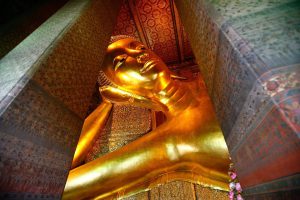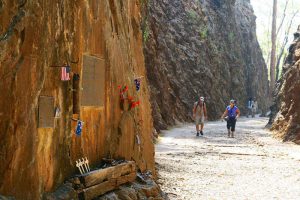Highlight in our tour programs
- Pick up from hotel to River City and depart to Ayutthaya province
- Arrive Ayutthaya: where you will explore the temples ruins within Ayutthaya Historical Park
- Visit Wat Phrasri Sanphet the largest temple in Ayutthaya that was built in 14th century and use as the Royal Temple-cum-palace by several kings
- Visit Wat Mahathat, over 600 years old was the heart and soul of Ayutthaya people. It was almost completely destroyed by the Burmese during the Thai-Burmese war.
- Visit the Chapel of Wat Mongkhon Bophit which enshrines A large bronze seated Buddha image, measurement at
- 9.55 metres and height at 12.45 metres, a model of the Buddha image during the end of Ayutthaya reign.
- Visit Wat Lokayasutharam; has a mysterious past whereby its origins are unknown. The temple enshrines the biggest of reclining buddha image, with a length of 42 meters and a height of 8 meters constructed in the style of early Ayutthaya Period.
- Welcome onboard the cruiser, buffet lunch which includes a delightful variety of oriental and western cuisines
- you will relax and enjoy the fascinating scenery on the river along both sides before reaching Bangkok City
- Coffee break will be served while you enjoy the enchanting sight along the river banks
- Arrive at the River City Shopping Complex Pier and transfer to hotel
General Information
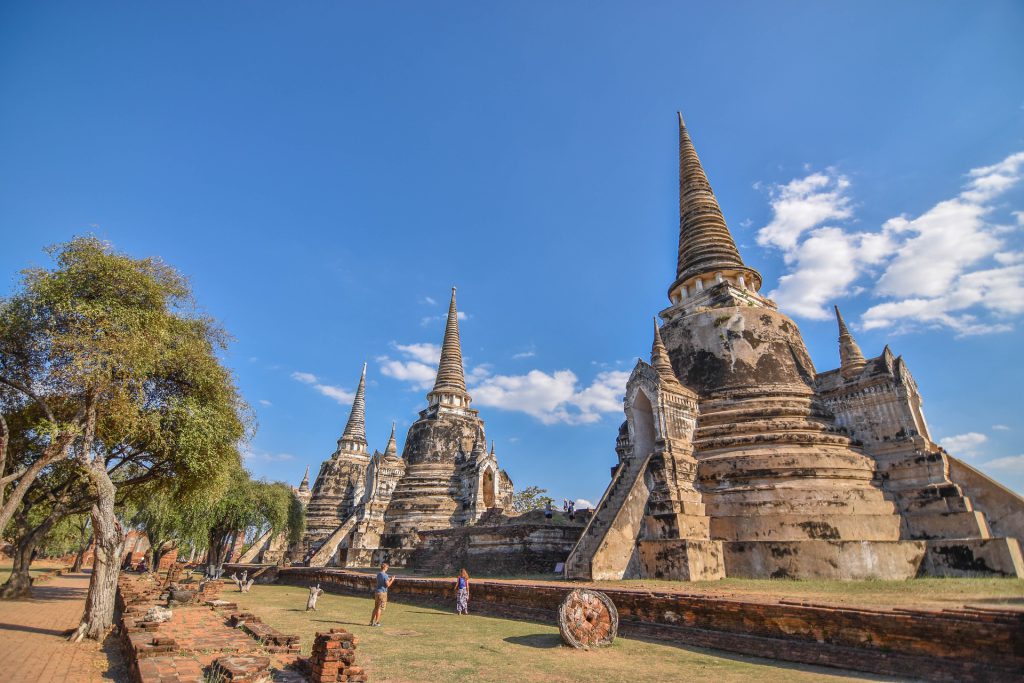
Ayutthaya is one of Thailand’s historical and majestic highlights. The capital of Thailand, then known as the Kingdom of Ayutthaya was a glorified as one of the biggest cities in Southeast Asia and a regional power for 417 years under 33 Kings in different dynasty. The historians believed that King U Thong was founded The Kingdom of Ayutthaya as the capital in 1350, the port city gained by its prime location nearby the major rivers of Chao Phraya River, Lopburi River and Pa Sak River flow around Ayutthaya and into canals which is cut Ayutthaya into different zones and access by boat only. The city of Ayutthaya was the political and economic capital of the Kingdom of Siam and remained powerful for centuries.
The King of Ayutthaya was believed to be a Dhevaraja, a divine ruler or an avatar of the Hindu God Narai. The grand palace was thus built to conform to the imagined layout of Mount Phra Sumeru, believed to be the legendary center of the universe.
However, The King of Ayutthaya stipulated that the King ruled as a Dharmaraja or absolute monarchy, governed by righteousness. He was believed to be a bodhisattva and protector of Buddhism. In and around the island kingdom were more than 400 temples. They included royal temples, built at the order or sponsorship of the King and members of the royal family, those sponsored by nobles and civil servants and those paid for by ordinary people. Traditionally, affluent people considered building a temple a meritorious act, a means to accumulate good karma for their next lifetime. Socially, temple builders gained a lot of prestige. In a way, contributing to the religion served as a redistribution of wealth turning personal assets into communal ones. It also helped create a bond and a sense of belonging within the Buddhist community. Ancient Ayutthaya was filled with Buddhist temples that you will visit some in our tour programs.
As Ayutthaya grew, Ayutthaya people were never short of water so they could produce an abundance of rice. Waterways also created trade routes perfect for exporting their produce, salt, dried fish and more.
Ayutthaya was a major port that served as a hub for international trade and become a major trading and economic hub of Southeast Asia.
Ayutthaya was the center of all kinds of goods whether wildlife, jungle products, minerals or produce from those cities located further inland. India was also a big market for sandalwood. Deerskins were exported to Japan to make armor, sword hilts and gun scabbards. The bark of spearwood was very popular in the Japanese market, and so was tin and lead. Rice was a major export to China during the late Ayutthaya period.
Ayutthaya was a large market for foreign merchandise, especially luxury goods for the elite, such as good-quality tea, silk, Chinese porcelain, Indian cotton, Persian perfume and rugs, Japanese furniture and swords, and European mirrors. Apart from these, Ayutthaya also imported silver and bronze from Japan, and cannons and small arms from Europe
The prosperity brought peoples of different race and religion into the kingdom. One of the first groups of foreigners to settle in Ayutthaya was Chinese overseas merchants. More foreigners of increasingly diverse origin followed. Ancient maps made by Europeans indicated foreign communities to the south of the island. They identified places that served as residences, places of worship and factories of the Japanese, Malay, Mon, Vietnamese, Chinese, Portuguese and the Dutch. The palace engaged actively in trade itself by reselling goods sent to it as tributes in exchange for labor. It also served as a middleman by setting up a ministry of trade to decide the prices of goods that foreign traders wanted to sell to it. The palace’s sea trade was a major source of revenue for the kingdom.
Even Ayutthaya was more than 100 kilometres away from the sea. Its inner position could be a disadvantage compared to other ports that were closer to the sea. That is why Ayutthaya paid a lot of attention to developing a transportation network along the Chao Phraya River, its main access to the outside world. Many canals were dug to connect the winding curves of the river in order to reduce the distance between the river’s estuary and city itself.
The Kingdom of Ayutthaya reached its apex in terms of sovereignty, military might, wealth, culture, and international commerce in the 16th century, when the Kingdom’s territory extended into and beyond present-day Laos, Cambodia, and Myanmar. Ayutthaya had diplomatic relations with Louis XIV of France and was courted by Dutch, Portuguese, English, Chinese and Japanese merchants.
The city was a dominant trade power until 1767 when it was attacked and burned to the ground. Many of Ayutthaya’s wooden structures were completely lost to the fire.
The Kingdom of Ayutthaya was conquered and the city’s magnificent structures were almost completely destroyed by Burmese invaders. The ruins that now remain, many of which have been painstakingly restored in 1991 UNESCO agreed at its meeting at Carthage, Tunisia, to include Ayutthaya in its list of World Heritage Sites for many reasons and one of them is Ayutthaya was a unique kingdom physically, historically and culturally.
The architecture of Ayutthaya is a fascinating mix of Khmer and early Sukhothai styles. Throughout Ayutthaya, architectural heritage reminiscent of the grand past, the 417 years that Ayutthaya reigned as the capital city can be seen. These include exquisite Buddha images, magnificent temples, palaces and forts. Ayutthaya’s prosperity is evident in its exquisite Buddhist art, architecture, sculpture and paintings some traces of which have remained until today.
The kingdom of Ayutthaya may be no more but the spirit of Ayutthaya lives on as a part of the Thai cultural identity. Each day, a number of people, young and old, native Thais as well as foreign tourists, travel to the Ayutthaya city to pay homage to the sacred legacy and to admire its splendid archaeological remains.
From Ayutthaya to Bangkok
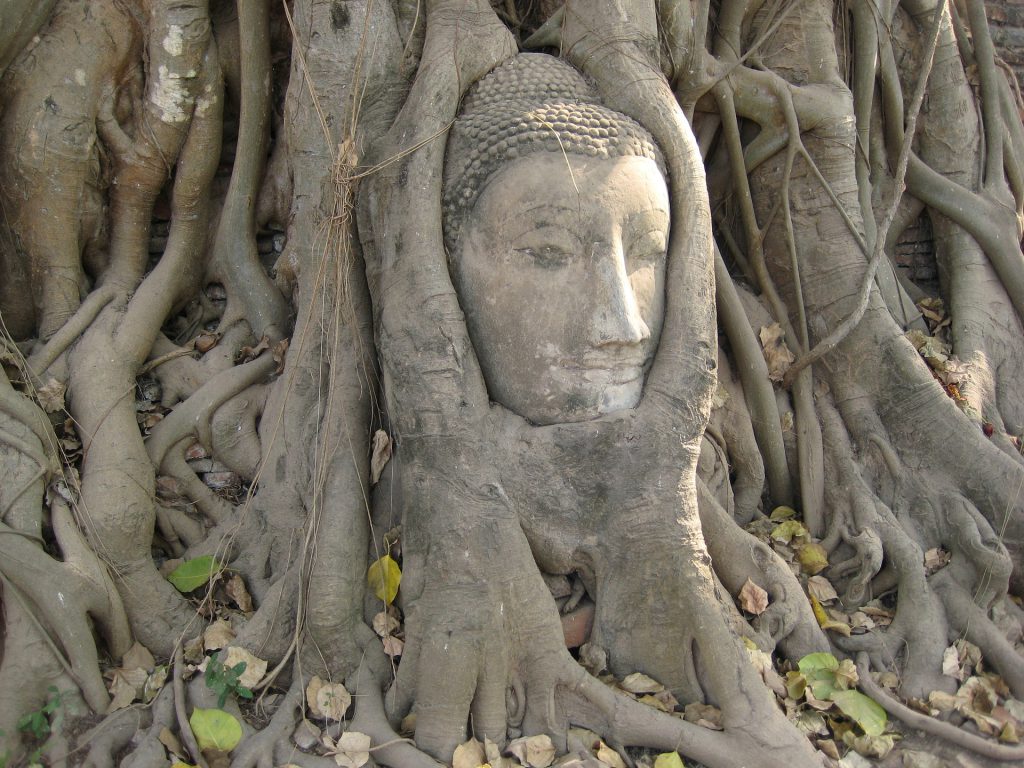
One important lesson to be learned from studying the history of Ayutthaya, it is cultural tolerance. At its height of prosperity, Ayutthaya was a mix of people of different race, religion and culture who found ways to live together to share among themselves different aspects of their culture in peace. The great civilization of Ayutthaya was born out of cultural diversity and beautiful exchange. Tolerance was passed on to the Rattanakosin era and has become part of the national character of being Thai as we know it today.
In 1767 Ayutthaya’s reign as the capital city ended. The center of administration was moved southwards to Bangkok, a former port outlet of Ayutthaya. At the end of the brief Thonburi era, King Rama I, the founder of the Chakri dynasty, established the new Rattanakosin era and in 1782 proclaimed Bangkok the new capital of Siam.
Bangkok was developed with the image of Ayutthaya at its peak as the blueprint. The first generation of Bangkok consisted of people who grew up in Ayutthaya. Therefore, landscape development during the first 50 years of the new capital was inspired by the good old days of the old town.
From then on, Ayutthaya became known as the old town. Its places of residence, temples and palaces were deserted. Some that still stood after the ravages of the war were pulled down so that the invaders could not make use of them.
Our day tour from Bangkok brings you to witness the glory of the ancient capital through its temples and palace ruins, the remaining historical attractions which still command respect.
Dress suggests for this tour
Casual outfits suitable for walking
Please note that visitors are required to dress appropriately (no bare shoulder, bare knees or strapless-heel shoes). Shoes must be removed before entering all temple buildings as a matter of respect.
There are a lot of stories to tell, come and discover by yourself with us; Click Thailand……
Plan your tours in Bangkok today, book through https://www.clickthailandtour.com We organized tour in Bangkok with an experience in the tourism industry for a person who would prefer searching different things than normal. By our own experience which has been more than 26 years working with tour guides, tour operations and travel agency business so we know what our clients’ needs are. Our English-speaking guides are licensed by the Tourism Authority of Thailand, they will make your trip more comfortable and enjoyable providing quality services that is helpful for you. We believe that you will appreciable and unforgettable experience trip with us; Click Thailand.
Let us work to meet your unique travel needs with worry-free travel.
Reasons to book with us
- Premium private tour service
- Authentic travel experience
- Knowledge and experience guide
- Easy payment terms
- No hidden /extra charge
We guarantee you will be satisfied with our service.
